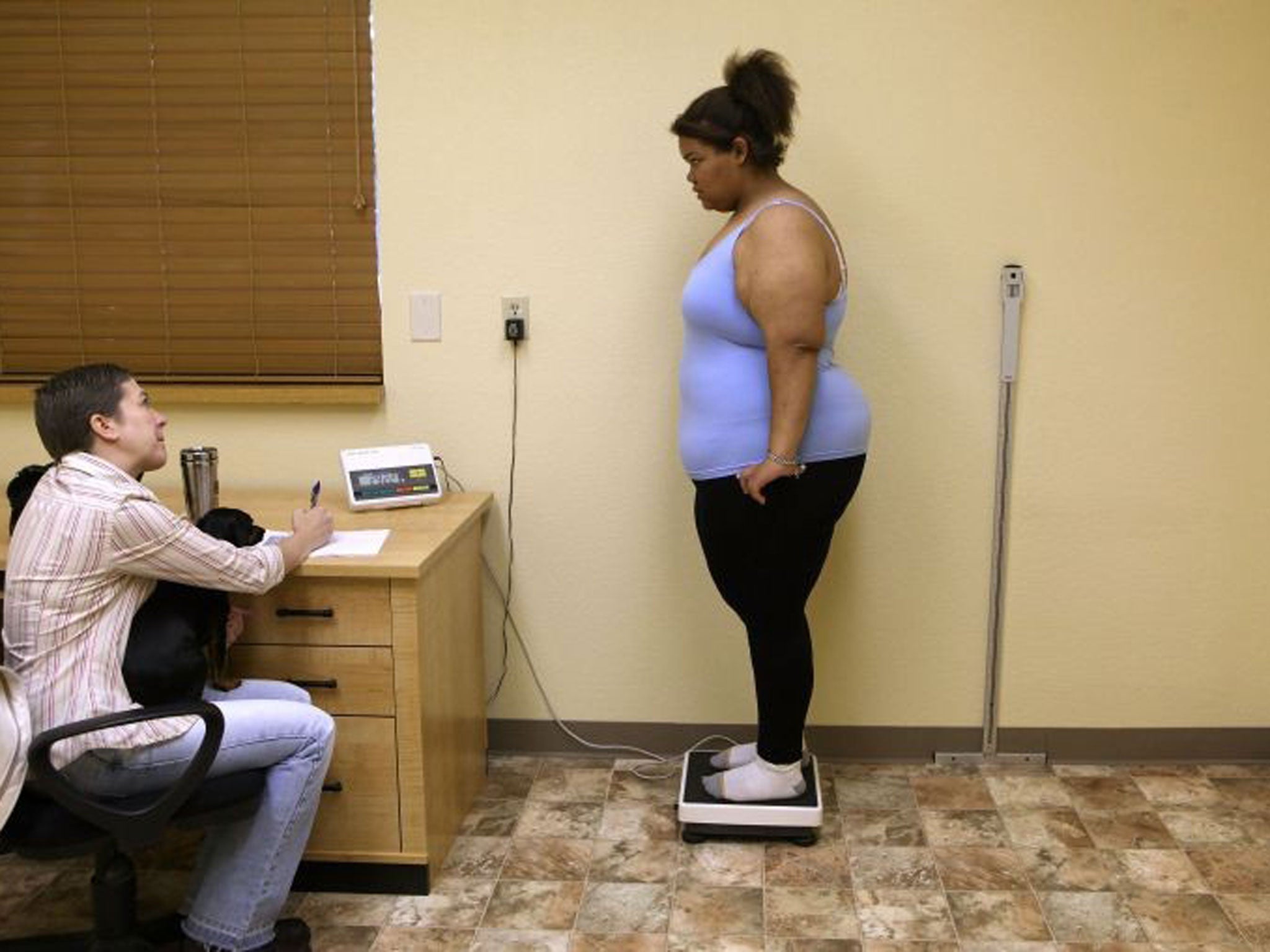Heavy task: In America, kids show adults how to fight the flab
The US may finally be getting a handle on obesity problems, but it’s pre-schoolers setting their elders an example

The tiny tots at a shiny new pre-kindergarten school and day-care centre in Durant, Oklohoma, are barely aware of the small grey monitors clipped to the back of their collars where tiny fingers cannot reach. These are pedometers, a visiting reporter is told, silently recording every step, skip and jump the child takes each day.
Attaching the equivalent of a black box to children so young – some aren’t past potty training – to watch their calorie-burn might seem extreme, but when it comes to fighting flab, America is ready to try just about anything. Widening girths were identified as one of the country’s gravest health challenges more than 60 years ago and very little that has been attempted since to reverse the trend seems to have worked – until now.
A study just published by the Journal of the American Medical Association reveals that it is precisely this age group that is setting an example for everyone else. It found that obesity rates among two- to five-year-olds in America had dropped an impressive 43 per cent over the past decade. For nearly every other age bracket the rates were constant, with the exception of women over 60, who are getting heavier.
This progress is being measured in just a small fraction of the population. But it has been widely hailed, nonetheless. It is agreed that a propensity to being overweight as an adult can be established in early childhood years – it is tough not be pudgy at 40 if you were pudgy at four, experts say.
“This is the first time we’ve seen any indication of any significant decrease in any group,” said Cynthia Ogden, a researcher at the Centres for Disease Control and Prevention and a co-author of the study. “It was exciting.”
It is not known, however, why so steep a drop occurred – about eight per cent of two- to five-year-olds were obese in 2012 compared with 14 per cent in 2003 – is not known. Declining consumption of fizzy drinks may be a help, as might mothers breastfeeding for longer.
Another cause almost surely has to do with awareness initiatives like this one in Durant, and many of these sprang directly from Michelle Obama’s “Let’s Move” good nutrition and exercise campaign for kids launched four years ago last week.
“I’m thrilled at the progress we’ve made over the past few years in obesity rates among our youngest Americans,” the First Lady said, but added: “While childhood obesity rates are beginning to fall, we still have a long way to go before we solve this problem .... We can’t slow down, we can’t turn back.”
The campaign was backed by Barack Obama and his Vice President, Joe Biden, last week as they took a brief jog round the White House.
Mrs Obama also hailed a proposed revamping of food labelling guidelines for the first time since they were introduced 20 years ago. Required for all packaged foods on grocery shop shelves, the new labels will detail more clearly the calories per serving and also raise the size of servings to bring them closer to what people are likely to eat in a sitting – consumers tuck into not one scoop of ice cream, as current labels suggest, but, maybe, three – and generous ones at that.
“You, as a parent and a consumer, should be able to walk into your local grocery store, pick up an item off the shelf, and be able to tell whether it’s good for your family,” she said on Thursday. “So this is a big deal, and it’s going to make a big difference for families all across this country.”
The US was actually relegated to second spot in world obesity rankings by a United Nations report last year which gave the top slot to Mexico, where roughly one third of the population is now rated “obese” and 70 per cent “overweight”. It said 31.8 per cent of Americans were obese.
In an effort to curb youth obesity in general, the US issued strict new guidelines in January 2012 for school cafeterias, forcing kitchens to offer less carbohydrate-heavy choices and more fruit and vegetables. The same year, mandatory limits were set for snack foods in school vending machines with products offering lower levels of sodium and fat. But there is evidence that students bypass these healthier options.
Subscribe to Independent Premium to bookmark this article
Want to bookmark your favourite articles and stories to read or reference later? Start your Independent Premium subscription today.

Join our commenting forum
Join thought-provoking conversations, follow other Independent readers and see their replies